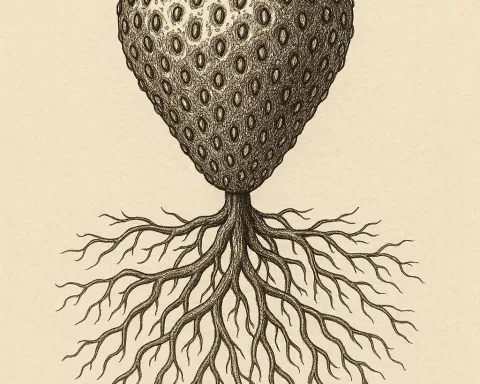In South Africa, healthcare costs are climbing rapidly, creating a tough situation for many, especially elderly citizens. Major medical aid providers, like Discovery and Bonitas, plan significant hikes in contributions for 2025, adding financial pressure to those already struggling. While the economy shows signs of growth, such as rising salaries, it’s not keeping up with the soaring medical expenses. This leaves many people facing hard choices about their healthcare options. As the nation moves forward, finding a way to make healthcare affordable for everyone is more important than ever.
What are the main reasons for rising healthcare costs in South Africa?
Rising healthcare costs in South Africa are driven by factors such as medical inflation, an increasing prevalence of chronic illnesses, and an aging population. Major medical aid providers like Discovery and Bonitas have announced significant contribution hikes, further straining affordability for citizens, particularly retirees.
South Africa finds itself at a significant juncture, marked by contrasting economic optimism and an impending healthcare affordability crisis. The nation’s economic outlook shows promising signs, bolstered by increased investor confidence and stabilized foreign exchange rates, all under the guidance of the Government of National Unity (GNU). However, beneath these positive developments lies a growing concern for South African medical aid members, especially the elderly and retired citizens. As we look toward 2025, the landscape of medical aid contributions presents considerable challenges, with anticipated price surges that demand careful examination. This article delves into the intricate reasons behind these price escalations, their implications, and the broader economic factors at play.
Rising Medical Aid Contributions and Their Impact
Recent reports from The Daily Investor shed light on the looming financial strain faced by South African medical aid members. Major healthcare providers like Discovery, Bonitas, and Momentum have announced substantial increases in their contributions for the year 2025. Discovery’s plans, for instance, are expected to see a rise ranging from 7.4% to 10.9%, averaging at 9.4%. Similarly, Bonitas is set to implement an average hike of 10.2%, while Momentum maintains that its members’ benefits will remain unchanged despite the escalating costs. These proposed increases have been submitted to the Council for Medical Schemes (CMS) for approval, with a potential effective date of January 1, 2025.
Although the economic backdrop appears stable, with the average South African salary growing by 4.8% over the past year, this growth does not match the surges in medical aid costs. The increase in South African Social Security Agency grants mirrors this salary growth, highlighting the growing disconnect between economic indicators and individual financial realities. Consequently, many citizens, especially retirees on fixed incomes, find medical aid becoming increasingly unaffordable, posing serious implications for their access to healthcare.
The Drivers Behind the Cost Increases
The justification for the significant rise in contributions primarily lies in managing medical inflation. Unlike general inflation, medical inflation considers the increasing costs associated with healthcare services, pharmaceuticals, and technological advancements in treatment options. Discovery points to persistent factors such as the rising prevalence of chronic illnesses and an aging population as major drivers of cost increases. Over the past 15 years, the percentage of beneficiaries with chronic conditions has surged from 15% to 33%, placing an escalating financial burden on healthcare providers.
Bonitas attributes its rate hikes to turbulent industry conditions experienced over the past year. The healthcare sector has faced unprecedented challenges, including rising operational costs and necessary investments in technology to maintain service quality. Each provider must navigate the delicate balance between offering comprehensive coverage and ensuring their financial sustainability, a task fraught with complexity given the current economic climate.
This situation presents a significant challenge for consumers, many of whom struggle to afford essential healthcare services. With South Africa’s high unemployment rate, individuals are forced to make difficult decisions about how to allocate their limited resources. Opting for a more affordable medical scheme could result in reduced benefits and higher out-of-pocket expenses, a risk many are reluctant or unable to take. Providers emphasize the importance of selecting plans that offer genuine value rather than mere cost savings, highlighting the necessity of strategic decision-making in healthcare coverage.
The Broader Socio-Economic Context
Historically, South Africa’s healthcare system has undergone substantial transformation and adaptation. The introduction of private medical schemes initially promised wider access to quality healthcare services. However, over time, the sector has evolved to reflect the broader socio-economic disparities present within the country. Despite governmental efforts aimed at ensuring equitable healthcare access, significant gaps remain, exacerbated by high unemployment and economic inequality.
Looking from a broader perspective, the current situation can be likened to a complex theatrical performance. The backdrop is a nation rich in history, cultural diversity, and an evolving socio-political narrative. The actors include government bodies, healthcare providers, and citizens, each playing their role in navigating the unfolding drama of rising costs and limited resources. Within this performance, the broader economic context adds layers of complexity, revealing the disconnect between improving macroeconomic indicators and the financial well-being of individuals.
As South Africa continues to progress under the GNU’s promising leadership, ensuring that economic gains translate into tangible benefits for all citizens becomes a pressing priority. Bridging the gap between national economic growth and individual prosperity remains a critical challenge that requires collective effort and innovative solutions.
Navigating the Future: Balancing Economic Growth and Healthcare Access
In conclusion, the intersection of rising medical aid costs, economic disparities, and demographic shifts presents a multifaceted challenge for South Africa. The healthcare affordability crisis underscores the urgent need for strategic policy interventions and innovative solutions. As the nation navigates these turbulent waters, providing affordable healthcare access to all citizens remains a top priority. The road ahead demands a collective effort to balance economic progress with the fundamental human right to health and well-being, ensuring that all South Africans can benefit from the country’s economic advancements.
FAQ: South Africa’s Economic Growth and Healthcare Cost Dilemma
What are the main reasons for rising healthcare costs in South Africa?
Rising healthcare costs in South Africa are driven by several factors, including medical inflation, the increasing prevalence of chronic illnesses, and an aging population. Major medical aid providers, such as Discovery and Bonitas, have announced substantial hikes in contributions for 2025, further straining affordability, particularly for retirees.
How much are medical aid contributions expected to rise in 2025?
Major healthcare providers like Discovery and Bonitas have announced significant increases in their contributions for the year 2025. Discovery’s contributions are expected to rise by 7.4% to 10.9%, averaging at 9.4%. Bonitas plans to implement an average hike of 10.2%, while Momentum has stated that its members’ benefits will remain unchanged despite rising costs.
How does economic growth in South Africa compare to the rising healthcare costs?
While South Africa’s economy shows positive signs, such as an average salary increase of 4.8% over the past year, this growth is not keeping pace with the rapidly rising healthcare costs. This disconnect places additional financial burdens on citizens, particularly retirees on fixed incomes, making healthcare increasingly unaffordable.
What factors contribute to medical inflation specifically?
Medical inflation encompasses the rising costs associated with healthcare services, pharmaceuticals, and advancements in treatment technologies. Factors contributing to medical inflation include the growing prevalence of chronic conditions and the challenges of maintaining service quality amid rising operational costs in the healthcare sector.
What challenges do individuals face in affording healthcare in South Africa?
Many South Africans, especially those with limited incomes, face difficult choices regarding their healthcare options. With high unemployment rates, individuals must allocate their scarce resources carefully, often choosing between comprehensive coverage and affordability. Opting for a cheaper medical scheme may lead to reduced benefits and higher out-of-pocket expenses, which can deter individuals from making necessary healthcare decisions.
What is being done to address the healthcare affordability crisis in South Africa?
Addressing the healthcare affordability crisis requires strategic policy interventions and collective efforts from government bodies, healthcare providers, and citizens. As South Africa continues to advance economically, ensuring that these gains translate into tangible benefits for all citizens is crucial. Innovative solutions and a focus on equitable healthcare access will be essential to balance economic growth with the fundamental right to health and well-being.












